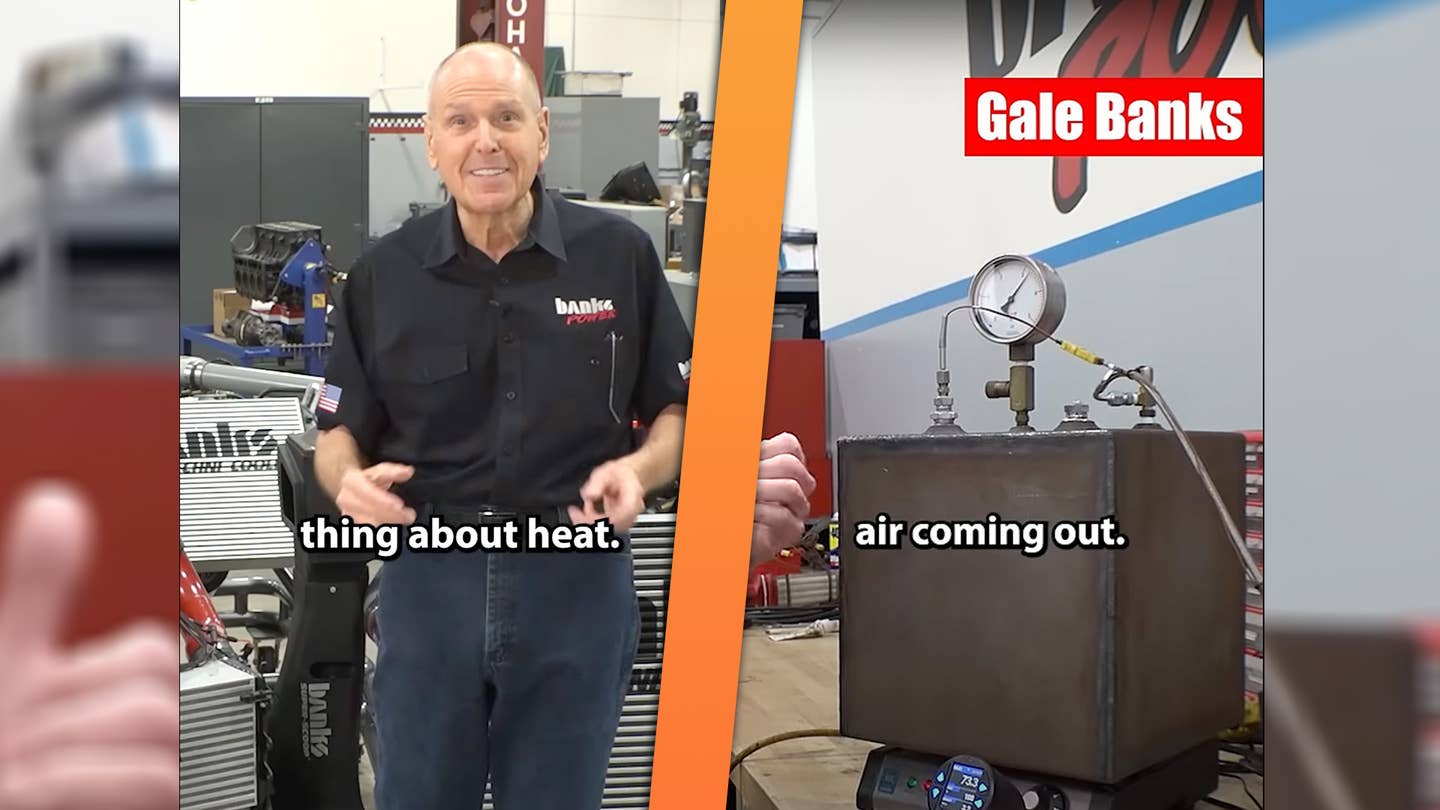Today’s lesson in boost is all about air density.

You’ll often hear all about boost pressure, simply known as boost, when it comes to turbo and supercharged cars. It is the metric by which empires are made and by which empires fall, but is it the ultimate metric to measure your power numbers by? Well, let Gale Banks explain why boost isn’t the metric you should consider. It’s air density.
Most of you will know this, but for the curious folks that might not know, Boost is a measure of pressurized air. In the States, it’s often measured in pounds per square inch (psi), and overseas it can be measured in bars or kilopascals. Boost is positive air pressure, whereas vacuum is negative air pressure. Generally speaking, it’s the measurement by which many folks judge the effectiveness of their chosen forced induction for a good reason: More boost is strongly correlated to more power.
But like anything car-related or physics-related, it gets deeper than that. Pressure is simply a measurement of stress, the amount of force acting on an object. When a car is making 25 psi, 25 pounds of stress per square inch is being exerted at the point of measurement, which is often the intake manifold. It isn’t a measure of flow or air density, which is highly variable depending on the intake configuration and air temperature. It’s correlated to air density but with some strings attached.
Again, most of us know cold air is denser, and hot air is thinner. Think of metal when it’s heated; It expands with heat and contracts with cold. Air acts similarly. Banks shows that you can have the same amount of air in a sealed box, but you can have different boost pressure readings depending on temperature. He started with zero boost at 67 degrees Fahrenheit in the sealed box and heated the box to 188 degrees. It read 3.3 psi of positive pressure but gained no air density. That same amount of air expanded to pressurize the box, but there was no extra air to make more power.
The takeaway is that you can push more boost into an engine, but it might not make more power. Compressing air causes it to heat up, which is why modern turbocharged cars have intercoolers to cool the pressurized air. What is critical is the amount of air that is entering the engine. The same amount of air can have wildly different boost readings based on temperature, hence the need to understand air density.
Next time you shove more boost into an engine, think of Gale Banks. If you ever disappoint him, you’re probably doing something wrong.


